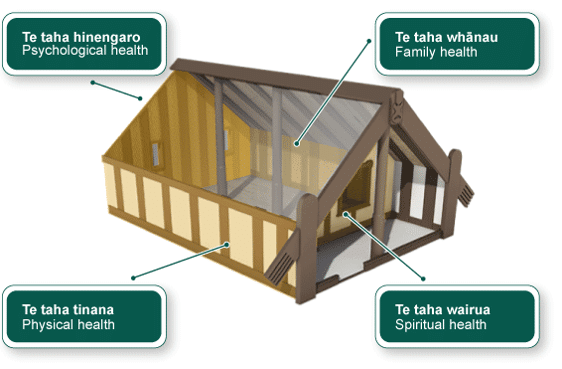Te Whare Tapa Whā
Sir Mason first presented Te Whare Tapa Whā in a training session to the Māori Women’s Welfare League research project ‘Rapuora’ in 1982.
At that time he was the senior psychiatrist at Palmerston North Hospital, and he was able to weave together the themes of the other speakers preceding him to arrive at this model.
He compared health to the four walls of a wharenui, and concluded that:
- Māori health and wellness is underpinned by four dimensions representing the basic beliefs of life; and
- ‘Well-being’ can be symbolised by the four walls of a wharenui being in balance to ensure strength and symmetry.
The wharenui (meeting house) is the symbol to illustrate Te Whare Tapa Whā dimensions of well-being.
Each wall of the house must be strong and balanced to hold its structure, so too, each dimension of well-being must be balanced for people to exist. This philosophy may be used to approach all areas of wellness in life. Interestingly, there’s no foundation in this model and land was a contentious issue at the time this model was developed.
Our role is to engage people in a way that helps them restore balance in these 4 areas.
Te Whare Tapa Whā is embedded in all aspects of Victim Support work, including the format of the case notes you’ll write in our database.

